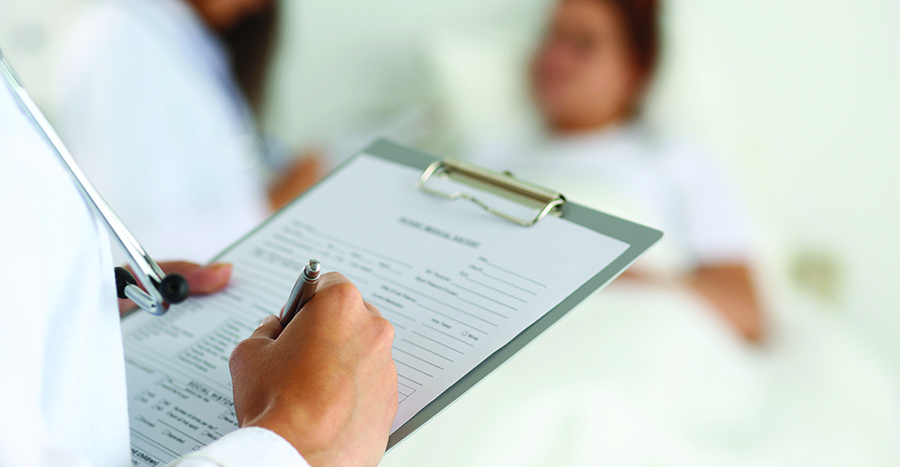Sleep Studies

There is no perfect answer as to when someone should consult a specialist for a sleep problem. A good rule of thumb is to see a specialist if your sleep problem persists for a month or more despite following your doctor’s advice and prescriptions. However, you should get expert help immediately if you have experienced dangerous symptoms such as waking up with chest pain or shortness of breath — or falling asleep at an inappropriate time such as while in a meeting at work, at an enjoyable party, or while driving a car.
How do I find a doctor that specializes in sleep disorders?
As sleep medicine is a relatively new specialty of medicine, most doctors with expertise in sleep medicine are usually board certified in either sleep medicine, pulmonology, neurology, psychiatry and psychology. If you cannot find a sleep specialist through your family doctor or hospital, check in the telephone directory’s yellow pages under sleep medicine or sleep laboratory. You may need to be formally referred to the sleep specialist by your family doctor, depending on your insurance plan.
Once referred to a sleep specialist, what occurs during the evaluation visit?
The doctor will obtain a general medical and sleep history, conduct a physical examination, and possibly require an interview with your bed partner. The case may be reviewed by other consulting physicians such as ear, nose and throat specialists, cardiologists, etc. While the doctor may suspect a particular sleep disorder after the evaluation, he will determine if a sleep study and additional tests are needed to conclusively diagnose the problem. If a sleep study — or polysomnographic session — at the sleep laboratory is needed, the doctor determines what such a session might entail.
What happens during a sleep study?
Sleep studies are typically conducted during the normal hours that a person considers to be bedtime. As a result, patients usually arrive for appointments at a sleep laboratory around 8-9pm and leave the next morning. Most laboratories are staffed by trained experienced polysomnographic technologists — or, in other words, sleep technicians who have received specialized training in the field of sleep disorders.
Upon arrival, the sleep technician will begin the process of placing electrodes (special sensors) on your scalp, forehead, temples, eyelids, under the nose, chin, chest, finger, and calves. For the patient’s ease and education, the technician should explain the purpose of each electrode as it’s being placed. Electrodes are usually placed using a type of medical affixative which does not cause any pain or discomfort. This process usually takes about an hour. After the placement of the sleep monitoring gear, the patient is free to relax until bedtime.
At bedtime, the technician will attach the long leads (wires) from the patient’s attached electrodes to computer monitoring equipment next to the patient’s bed. Again, there is no pain or discomfort. While it may seem a bit awkward for the patient to sleep with the many wires placed from them to the monitoring equipment, it should not create any discomfort nor impair a patient’s normal ability to get up during the night to use the restroom.
While the patient sleeps, a sleep technician will be collecting data and monitoring the patient on sleep diagnostic equipment. The following morning, the technician wakes the patient, removes the gear and the patient is discharged.
What happens following the sleep study?
After the session in the sleep laboratory, the data must be evaluated for sleep phases and for pathological events. This process involves several hours of a technician’s time and one to two hours of the sleep specialist’s time, as well as extensive use of laboratory computing equipment. This process usually takes seven to ten business days. Sleep specialists can then make a diagnosis and recommendation for treatment.
Usually a patient is scheduled for a follow-up appointment with the sleep specialist about two weeks after their sleep study to discuss the results and begin a treatment plan. Treatments can range from airway pressure appliances to medication, lifestyle changes, weight loss, ENT surgery and laser therapy, dental appliances, light therapy, and internal body clock adjustments. The treatment (or treatments) recommended depends upon the type of sleep disorder diagnosed. With some treatments, the patient must return for a second night at the sleep lab.
How much will the diagnostic process cost?
The doctor and sleep lab fees are usually billed separately, but the overall diagnostic cost is usually between $1000 and $3000. This typically includes the initial evaluation by the sleep specialist, the ten-hour sleep study conducted by a polysomnographic technologist, two to fours hours of analysis time by another polysomnographic technologist, and one to two hours of analysis interpretation by the doctor.
Are evaluations and sleep studies covered by health insurance?
Most insurance companies will reimburse between 70% and 90% of the actual bill. In most cases, the patient will be responsible for any portion of the bill left unpaid by the insurance company. On the other extreme, if a patient is on Medicare or Medicaid and your sleep problem is psychologically-based, little financial help can be expected from health insurance.
